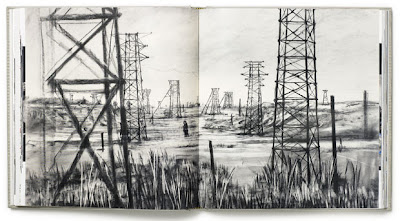The Great Unreal. Photographs by Taiyo Onorato and Nico Krebs. Editions Patrick Frey, 2009. 148 pp., colour and black & white illustrations, 9x13".
Photographers Taiyo Onorato and Nico Krebs studied photography at the School of Art and Design in Zurich and have worked together since 2003. They've had numerous solo and group exhibitions. This is their first artist book.
In 'The Great Unreal' "the photographic work deals with reality and the fabrication of reality. The geography of America serves as both setting and fertile ground for the examination.
Mysticism and demystification are important aspects in this process, as is working with a rich inventory of visual icons that can be continually deconstructed and manipulated.
The working method of both photographers is based on interventions prescribed mostly by happenstance and change. Through repetition and associative placement, the sometimes crude, sometimes subtle interventions begin to link to one another, establishing an exciting transformation of reality that only hesitatingly reveals itself to the viewer.
Together with book designers Megi Zumstein and Claudio Barandun, what emerged is an unmitigated picture book that makes a visual journey possible without any instructions.
It comprises narrative image sequences that approximate the curiosity and restlessness of being on the move and, at the same time, depict associative connections with the American landscape."
'The Great Unreal' was included in the Best Books of 2009 selection at photo-eye.








































